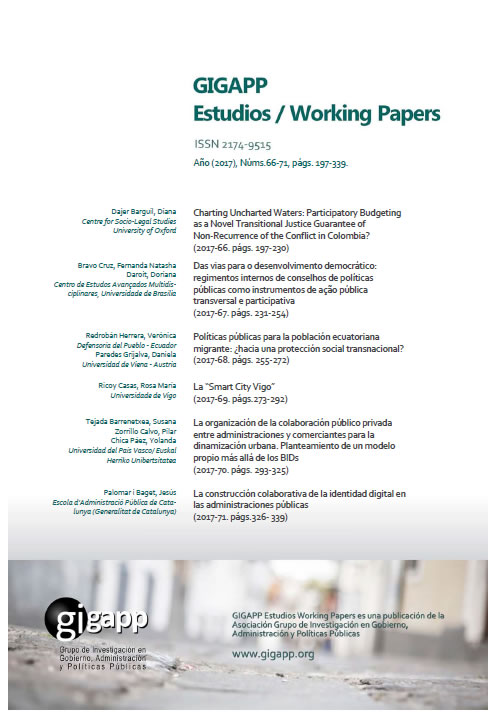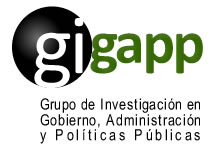La construcción colaborativa de la identidad digital en las administraciones públicas
Resumen
Las administraciones públicas en España empezaron a utilizar las redes sociales horizontales hace menos de una década, desde entonces con sus propios perfiles han ido construyendo su marca 2.0, siendo esta la suma entre la identidad digital que desde las propias administraciones se generaba a través de los perfiles sociales institucionales y gestionados por la propia administración pública y la reputación que el entorno construía al “hablar” y “conversar” con el perfil institucional de las administraciones. Después de estos años es necesario analizar de nuevo la identidad 2.0 de las administraciones públicas, de modo que esta ya no se construye únicamente a partir del perfil institucional sino que es el resultado de la identidad digital de diversos colectivos, en primer lugar el perfil de la administración pública, en segundo lugar la identidad digital de sus directivos públicos, en tercer lugar los empleados públicos que la componen y por último lugar se debe incluir la identidad digital de actores muy estrechamente relacionados con la administración pública en cuestión. Más allá de conocer como es la nueva identidad se deberán analizar las ventajas, los inconvenientes y los riesgos de esta “nueva identidad 2.0”, especialmente aquello relacionado con los comportamientos individuales de los actores que no son el propio perfil institucional. ¿Las administraciones deben influir, y cómo, en los usos personales de las redes sociales si estos afectan a la identidad de la organización?, ¿Son conscientes estos actores no institucionales que el uso personal de las redes sociales influye a la identidad 2.0 de la organización?
Descargas
Derechos de autor 2017 Jesús Palomar i Baget

Esta obra está bajo licencia internacional Creative Commons Reconocimiento-NoComercial-CompartirIgual 4.0.
Aquellos autores/as que tengan publicaciones con esta revista, aceptan los términos siguientes:
a. Los autores/as conservarán sus derechos de autor y garantizarán a la revista el derecho de primera publicación de su obra, el cuál estará simultáneamente sujeto a la Licencia de reconocimiento de Creative Commons Attribution-NonCommercial-ShareAlike 4.0 International (CC BY-NC-SA 4.0) que permite a terceros compartir la obra siempre que se indique su autor y su primera publicación esta revista.
Con esta licencia de acceso abierto, los lectores (usuarios) pueden:
- Compartir — copiar y redistribuir el material en cualquier medio o formato
- Adaptar — remezclar, transformar y construir a partir del material
Bajo los siguientes términos:
-
Atribución — usarios deberán dar crédito de manera adecuada, brindar un enlace a la licencia, e indicar si se han realizado cambios. Puede hacerlo en cualquier forma razonable, pero no de forma tal que sugiera que usted o su uso tienen el apoyo de la licenciante.
-
NoComercial — usuarios no puede hacer uso del material con propósitos comerciales.
-
CompartirIgual — Si remezcla, transforma o crea a partir del material, usuarios deben distribuir su contribución bajo la misma licencia del original.
-
Sin restricciones adicionales: los usuarios no pueden aplicar términos legales o medidas tecnológicas que restrinjan legalmente a otros de hacer cualquier cosa que permita la licencia.
b. Los autores/as podrán adoptar otros acuerdos de licencia no exclusiva de distribución de la versión de la obra publicada (p. ej.: depositarla en un archivo telemático institucional o publicarla en un volumen monográfico) siempre que se indique la publicación inicial en esta revista
c. Se permite y recomienda a los autores/as difundir su obra a través de Internet (p. ej.: en archivos telemáticos institucionales o en su página web) antes y durante el proceso de envío, lo cual puede producir intercambios interesantes y aumentar las citas de la obra publicada. (Véase El efecto del acceso abierto).



